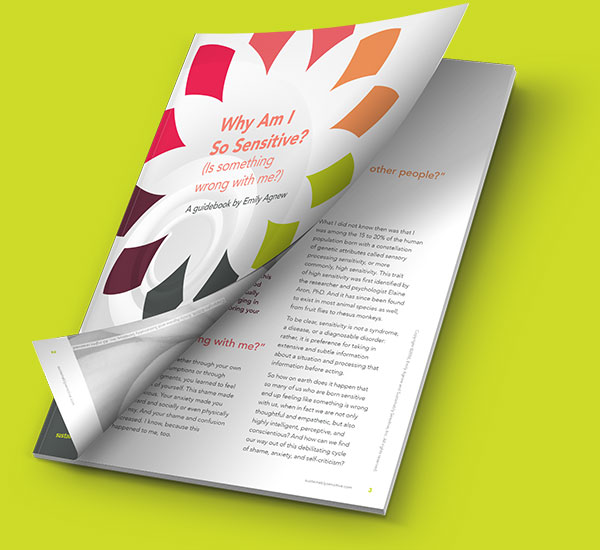Do you have a reliable breath practice for serious overwhelm? For an HSP, an industrial strength calming resource is life-changing.
I recently remarked to my partner, “I hardly ever get overwhelmed anymore!” Ha. My hubris was promptly rewarded. Our refrigerator died, and chaos ensued.
We both need to eat well. We also need to eat in a timely manner, or bad behavior ensues. So we treated this food chain disruption seriously. In three days, we had a new fridge in the house.
In the meantime, though, I rummaged repeatedly through three different coolers. I ran back and back and forth to our neighbor’s house to get items out of her fridge. I made multiple calls to the big box store to order the new appliance, and fielded the delivery. In short, I spent three days just this side of overwhelm.
Overwhelm is like a toilet. You’ve got to prevent it from rising past a certain point. Otherwise, things get really messy. As a highly sensitive person, I know that sooner or later, I will end up overwhelmed or, as we call it in the sensitivity world, overaroused. Knowing this, it has changed my life to have a breath practice that lowers the waters on the spot, taking me from frazzled to calm.
The 4-4-6-2 breath practice
The practice I use for immediate relief from overwhelm is called 4-4-6-2. It’s invisible and inaudible, so you can do it any time, anywhere. I’ve done 4-4-6-2 while driving, during phone calls, and (most recently) while waiting for refrigerators to arrive. I’ve demonstrated for you in the video below.
I’ve also demonstrated a more advanced version of the practice in which you combine a similar breath pattern with alternate nostril breathing. This version is not as instantly accessible as the basic 4-4-6-2. It takes some practice to learn, and because it is visible to others, you can’t use it in as wide a range of situations. However, when you need an industrial strength calming practice, there is nothing like it.
Reliable–even under pressure
Case in point: yesterday, I had my first in-person physical exam with a new primary care doctor. I went in fully aware I was worried about some test results I’d just seen. I also knew that being in an entirely new medical situation would be overarousing in itself.
Even so, I was shocked when the nurse read out my blood pressure. It was 148 over 84—stroke territory.
My blood pressure is usually on the low side. I said so. The nurse said she would try again at the end of the appointment. To my horror, the second reading was nearly as bad as the first. My HSP environmental susceptibility was on full display.
Thank goodness I knew what to do. I asked for five minutes alone, and I practiced alternate nostril breathing in a 4-4-12 pattern for five minutes. The nurse came back and took my blood pressure again. It had dropped to 102 over 80.
What a relief. This practice works—even under that kind of pressure.
I learned these practices from Dr. Richard Brown at Breath-Body-Mind. Dr. Brown explained that versions of 4-4-6-2 are found throughout Asia, India and China. The practice can cut through intense anger, addictive urges, repetitive thoughts, and even suicidal thoughts, and you can use 4-4-6-2 for any of these reasons.
For those of us who are highly sensitive, though, 4-4-6-2 and the even more powerful alternate nostril version stand out for their power to counteract overwhelm and overarousal. The alternate nostril breathing takes time and practice to master, but it’s worth every second. I highly recommend you add both to your self-care repertoire…and this video will help you do that.
Photo of field and sky: Dave Beasley at Unsplash




















Great video, thanks!
You are most welcome Brad, and thanks for the feedback! I totally rely on these practices.
Thank you for the blog and video. Especially your personal story of having your blood pressure taken before and after a breathing sequence! My mother isn’t overweight, she never smoked, she doesn’t drink and eats well at the retirement residence where she lives. She is lacking in sufficient physical activity. Somehow, over the past few years, she was diagnosed with high blood pressure and is on meds for this. I have no idea how this can be other than to say I suspect she is HSP and doesn’t know it. I know she gets very overwhelmed at doctor’s appointments. I really need to go over the self test with her and teach her this breathing sequence. I have been trying different lengths of in breath and pause and out breath for a couple of years now but haven’t found a comfortable breath sequence. I will try this. I can relate to the out breath lengthening being very relaxing. When I swim, by the half hour mark, I am able to lengthen my outbreath to around 12 seconds and really, as one swimming author put it…swimming in itself is a moving meditation. Another yoga author states….Unsteady breath, unsteady mind. Steady breath, steady mind. For me, my biggest challenge, and it is a big one, is my breath as I go on about my day. My father was told he was a shallow breather. I am wondering if some people anatomically have more difficulty breathing deeply than others. I find I breath better either lying down or standing up. Sitting and breathing properly is almost uncomfortable. If you have any insight, please share. Thanks.
Suzanne, it’s great you are exploring this. To get in the habit of breathing more slowly and deeply all da, I’d recommend you start a practice of coherent breathing (https://sustainablysensitive.com/hsp-self-regulation/). then begin to incorporate that rhythm of breath through your day. The 4-4-6-2 practice is good in the moment to calm you. If your mother could do coherent breathing, it would help lower her blood pressure generally over a period of months.
I’m just rereading my comment and noticed the date I wrote it April 22, 2023.
The very next day my 84 year old mother FELL and ended up in hospital with an uncomplicated pelvic fracture. 108 days later she was discharged from physical rehab hospital.
A week into her stay at acute care hospital, she contracted Staphylococcus Aureus infection in her blood. This infection can be fatal.
The Staph A infection was discovered after she had a heart incident that had her wheezing, shaking uncontrollably, delirious, fever, BP and pulse in serious heart attack zone. I thought she was dying right in front of me.
To this day no doctor has answered my question if the Staph A infection is what caused the heart problems.
My mother has had heart problems ever since and her heart meds aren’t balanced yet. more recently breathing problems. She has fluid on her lungs now.
Physiotherapist and I have been trying to teach her slow breathing exercises. Talk about difficult. My mother is 84, an HSP, and is having much difficulty understanding how to breathe slowly.
She goes into overwhelm and just can’t slow her own breathing down. I suspect she needs anatomical stretches that will automatically slow her breathing for her without her having to concentrate on slowing her breathing down….if that makes any sense.
Kind of liking hiding vegetables for children in a smoothie.
My mother was diagnosed with anxiety many decades ago. Placed on Valium. She eventually stopped the Valium on her own .
Now, knowing she is HSP, I shudder wondering how many other HSPs were medicated because Doctors weren’t aware of this central nervous system trait.
I hope there is help for HSP seniors and geriatric people.
I’ll try to remember to show my mother your video and see if alternating nostril breathing will help her.
HI Suzanne, I’m guessing the alternate nostril breathing will be way too challenging for your mom right now. Instead, if she is able to sit up, try waterfall breathing: breathing in, she raises one hand, palm up, up the front of her chest; breathing out, she turns the hand palm down and lowers it back down to her belly. So her hand travels up and down in front of her chest as she inhales and exhales. Find a speed that is comfortable, and practice it with her, then have her check in to see how she is feeling.
Even better, if she’s able, have her bring both hands up the center of the body as she inhales, until her arms are straight over her head (or as straight as her range of motion allows), then open them out to either side as she exhales. This naturally opens the chest. If she can tolerate doing that at 5 breaths per minute, that will really help her, but only go as slowly as she can very comfortably tolerate.